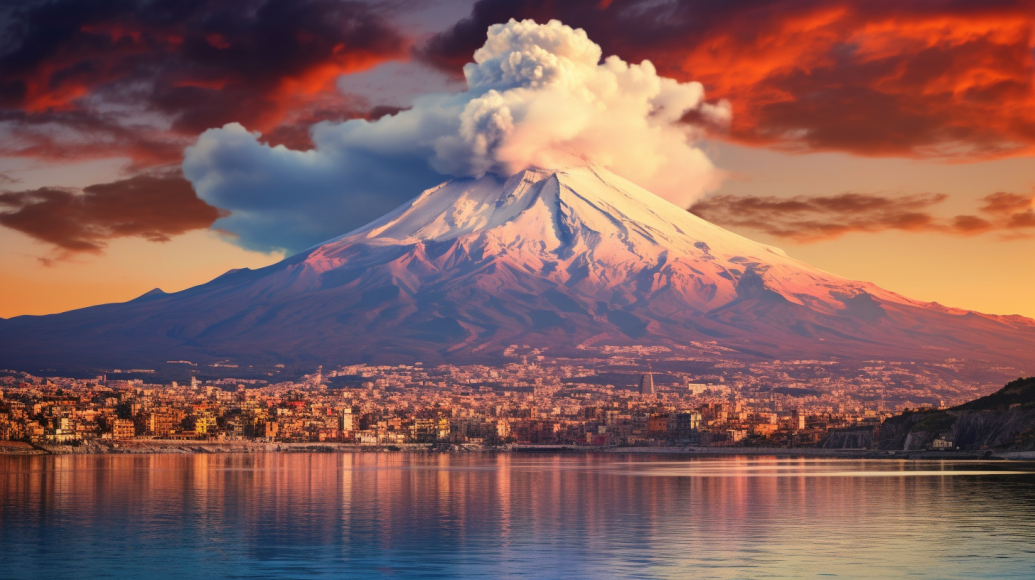TECH
Information about Mount Etna

Introduction to Mount Etna
Welcome, adventurers and culture enthusiasts, to the realm of Mount Etna – Europe’s tallest active volcano and a UNESCO World Heritage site. Rising majestically from the eastern coast of Sicily, Etna is not just a mountain; it’s a living, breathing testament to the raw power of nature.
As you stand at its base, gazing up at the smoke wisping from its peak, you’ll feel a sense of awe that has captivated humans for millennia. This guide will take you on a journey through Etna’s geological wonders, rich history, and cultural significance, providing you with all the practical information you need for an unforgettable experience.
Geological Wonders
Mount Etna is a geological marvel, constantly reshaping itself through volcanic activity. Its landscape is a tapestry of:
- Lava fields: Vast expanses of solidified lava, creating otherworldly black landscapes
- Craters: Over 300 smaller craters dot the volcano’s flanks
- Fumaroles: Vents releasing steam and gases, a reminder of the volcano’s active state
Did you know? Etna’s soil is incredibly fertile due to volcanic minerals, supporting lush vegetation and agriculture.
Eruption History
Etna’s fiery temper has been documented for over 2,700 years, making it one of the world’s most studied volcanoes. Here’s a brief timeline of significant eruptions:
- 396 BCE: First recorded eruption in Greek historical accounts
- 1169 CE: Major eruption causing widespread destruction and thousands of fatalities
- 1669: Longest recorded eruption, lasting 122 days
- 2001: Spectacular eruption visible from space
- 2021: Series of paroxysmal events, creating stunning lava fountains
Each eruption has left its mark on the landscape and in the memories of those who witnessed nature’s raw power.
The Eruption History of Mount Etna
Mount Etna, located on the east coast of Sicily, Italy, is one of the most active volcanoes in the world with a history of eruptions that dates back thousands of years. This majestic volcano has shaped the landscape of the region and continues to inspire awe and fascination among scientists and tourists alike.
The eruption history of Mount Etna is characterized by both explosive and effusive eruptions, creating lava flows that have extended for miles and ash plumes that have reached high into the sky. The volcano has experienced numerous eruptions throughout its history, with the most recent major eruption occurring in February 2021.
Etna’s eruptions are often characterized by their dramatic displays of lava fountains, pyroclastic flows, and explosive activity. The volcanic activity has resulted in the formation of numerous craters and cones on the volcano’s slopes, each telling a story of past eruptions.
Despite the destructive power of Mount Etna’s eruptions, the volcano also plays a vital role in the ecosystem of the region. The fertile soils created by the volcanic activity support a rich variety of flora and fauna, making the area around Etna a unique and diverse environment.
In conclusion, the eruption history of Mount Etna is a testament to the incredible power of nature and the ever-changing landscape of our planet. As one of the most studied and monitored volcanoes in the world, Etna continues to provide valuable insights into the dynamics of volcanic activity and serves as a reminder of the forces that shape our world.
Planning Your Visit
Best Time to Visit
The ideal time to visit Mount Etna is from May to September when the weather is most stable. However, winter visits offer unique opportunities for skiing on volcanic slopes! April to June is best time to visit Everest Expedition (Everest Nepal side)
Getting There
- Fly into Catania International Airport, just 65 km from Etna
- Rent a car or join organized tours from Catania or Taormina
Accommodation
Stay in charming towns like:
- Nicolosi: Known as “Gateway to Etna”
- Zafferana Etnea: honey production for its famous
- Linguaglossa: Perfect for wine enthusiasts
Top Attractions and Activities
- Cable Car Ride: Ascend to 2,500 meters for breathtaking views
- Hiking Trails: Explore paths through lava fields and forests
- Wine Tasting: Sample unique wines grown in volcanic soil
Stay in touch to get more updates & news on Tech Ranker!











